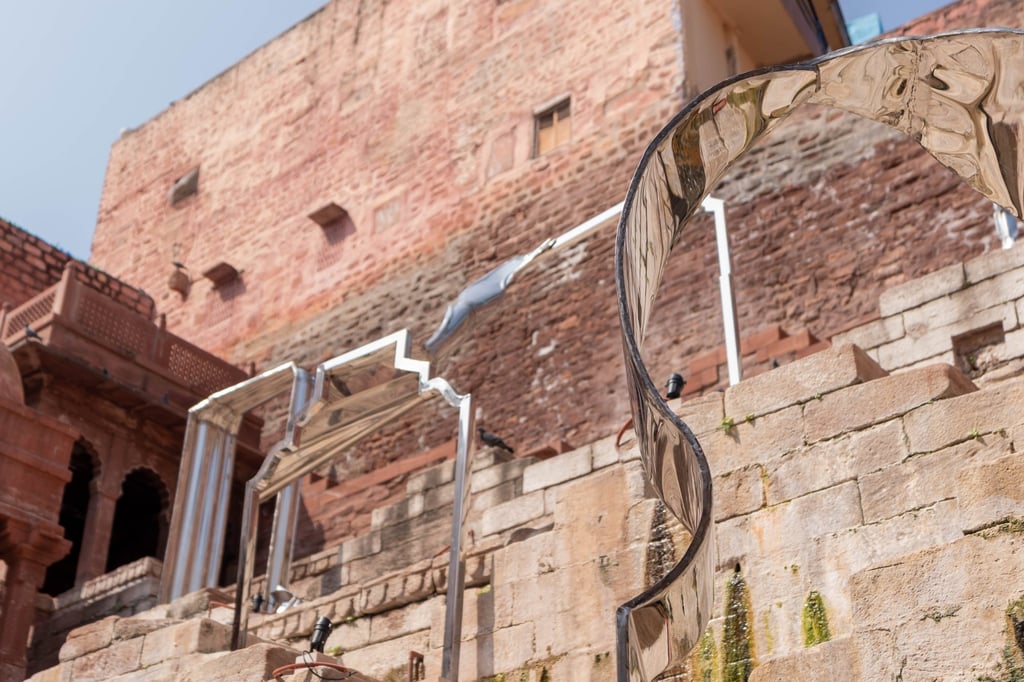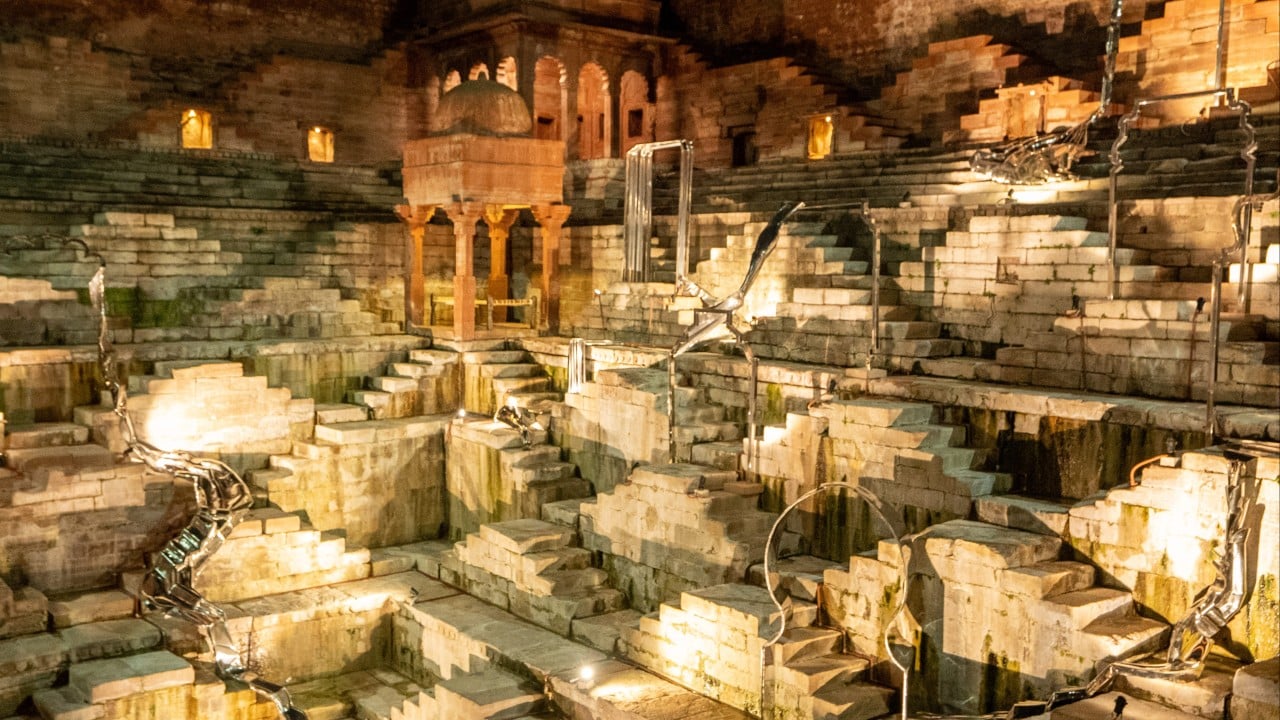Known for its azure-hued buildings, Jodhpur, India’s “Blue City”, is dotted with hidden stepwells. Among them is Mahila Baag Jhalra, an 18th-century structure with elaborate staircases surrounding a central pool. Once a vital water source and gathering space for women, it had fallen into disrepair.
Advertisement
“When I first saw it, there was a lot of garbage in the space: cigarette butts, chip packets and plastic bags,” Delhi-based artist Ayesha Singh says, adding that many locals she met did not know it existed.
Earlier this month, however, Singh collaborated with local metal specialists Mayank, Anshul and Kuldeep Kularia to transform the space into an immersive installation filled with glistening steel sculptures.
The installation, called Subterranean Inversion: Structures of Forgetting, featured sculptures draped across the historic stepwell. Some looked like liquid mercury flowing freely. Others were more angular.

The sun’s blinding reflection off the metal sculptures could at times conceal parts of the stepwell, Singh says, which symbolises how historic structures and the lives of remarkable women such as Gulab Rai – the concubine of Maharaja Vijay Singh of Marwar who commissioned the stepwell in 1753 – are often forgotten.
Advertisement

